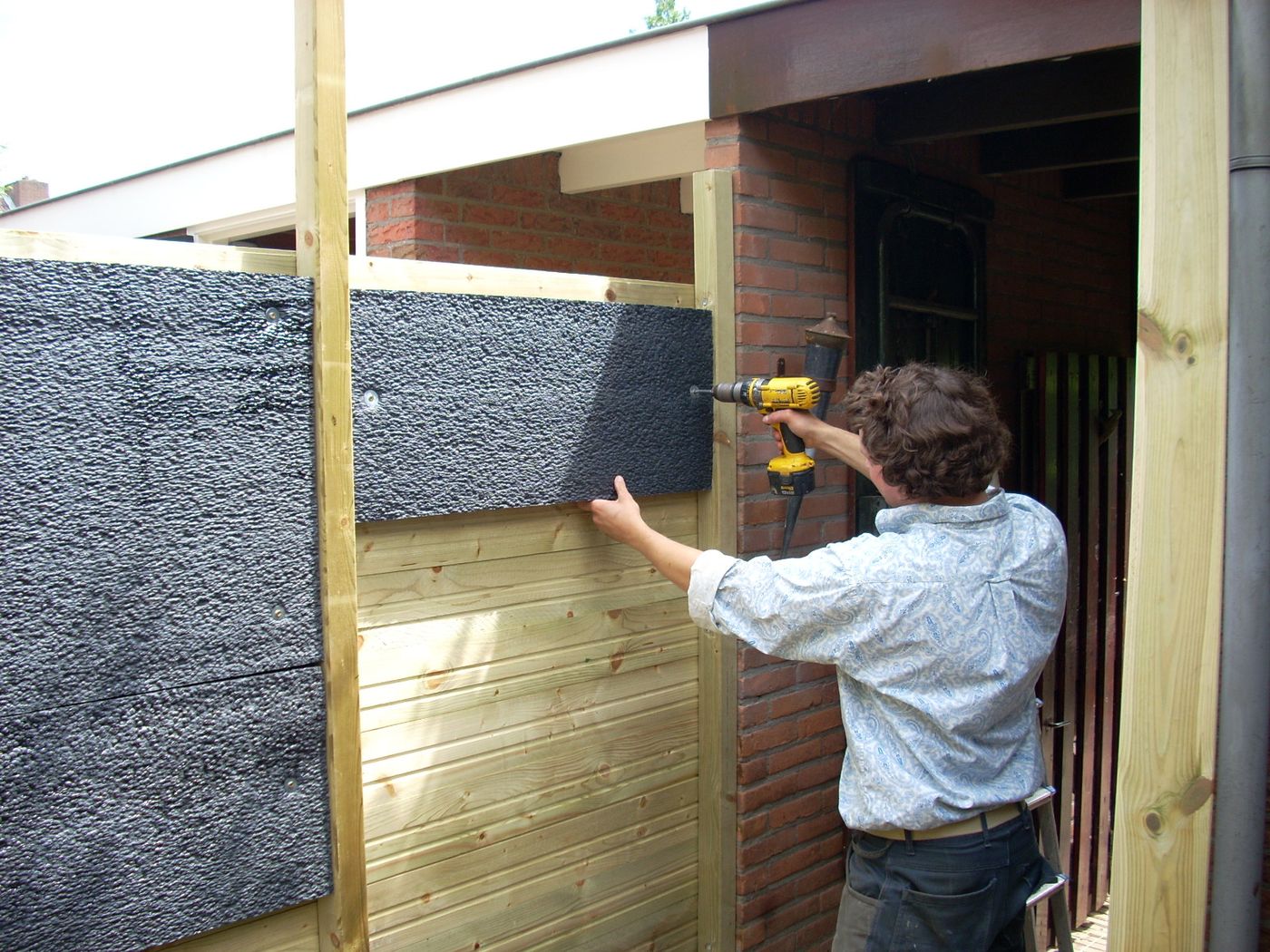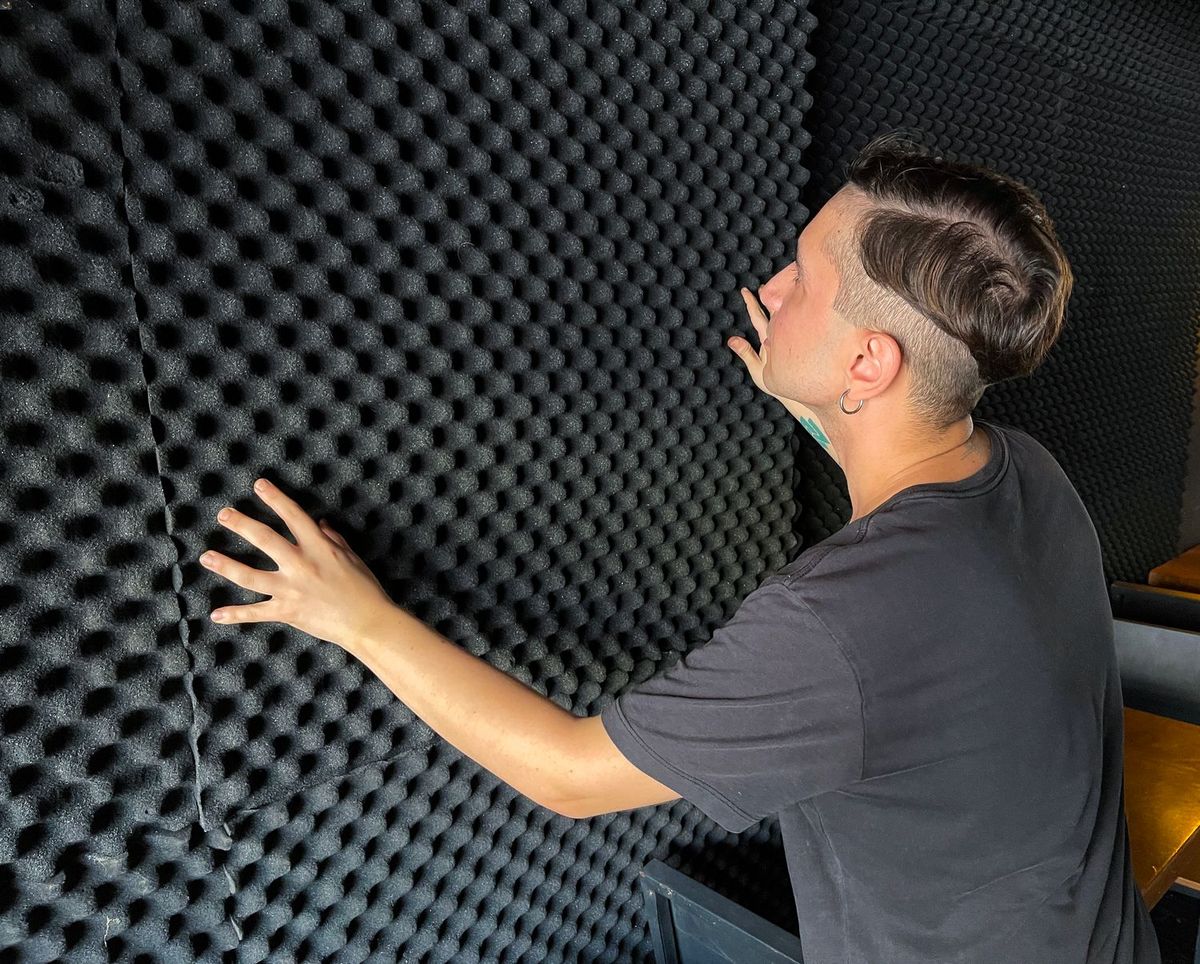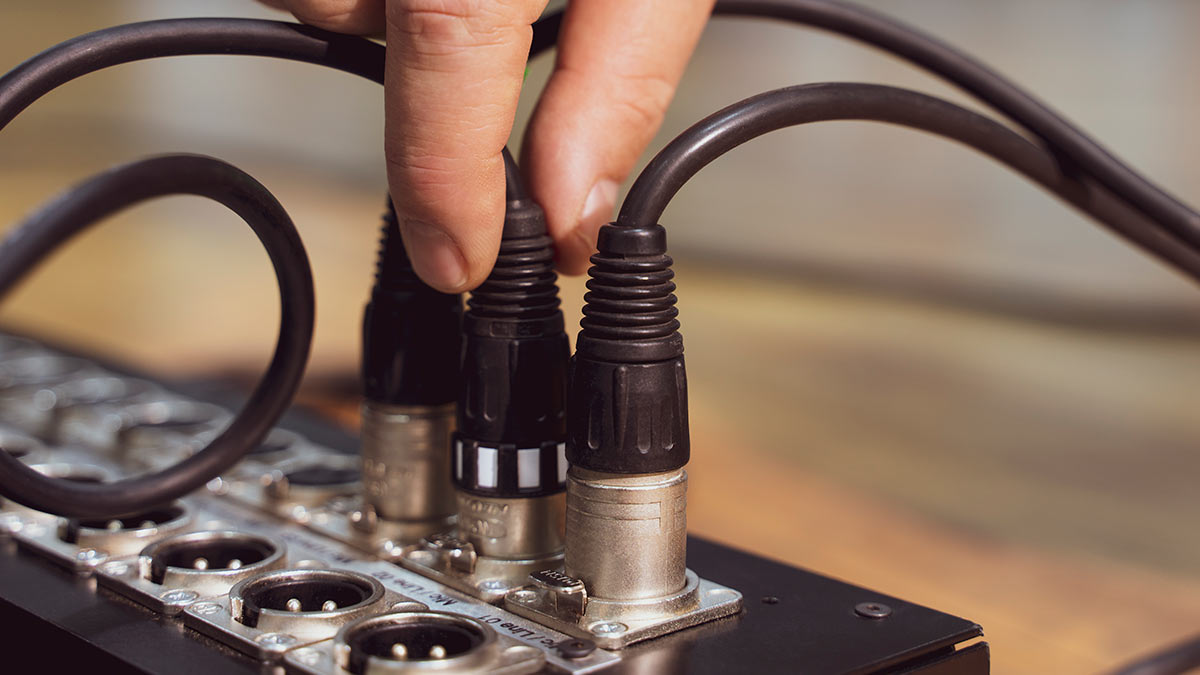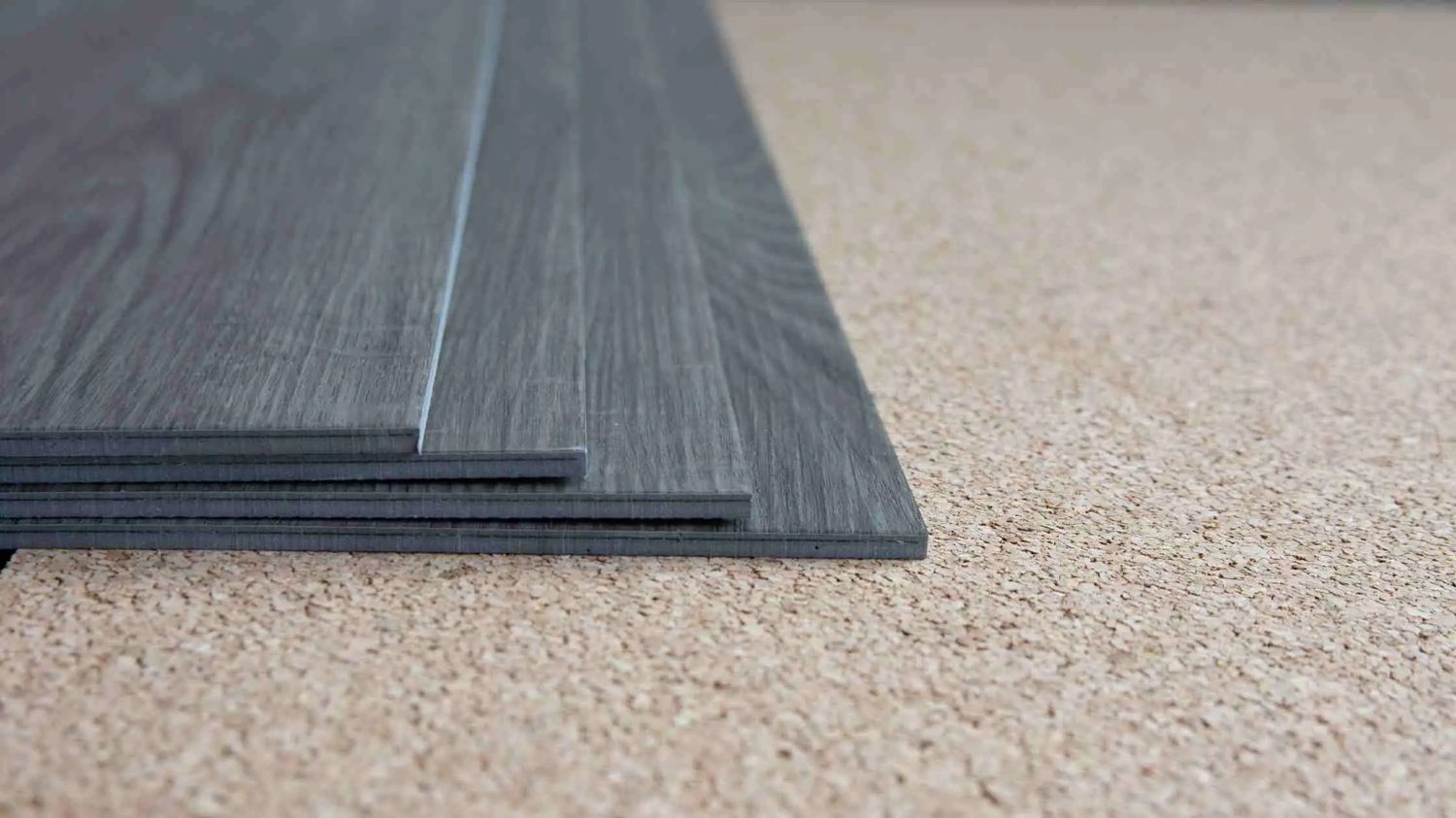Home>Production & Technology>Soundproofing>Using Insulation For Soundproofing When Siding


Soundproofing
Using Insulation For Soundproofing When Siding
Published: January 26, 2024
Looking to soundproof your home while siding? Learn how insulation can be used for effective soundproofing and create a quieter and more comfortable living space.
(Many of the links in this article redirect to a specific reviewed product. Your purchase of these products through affiliate links helps to generate commission for AudioLover.com, at no extra cost. Learn more)
Table of Contents
Introduction
When it comes to creating a peaceful and comfortable environment, soundproofing plays a crucial role. Whether you live in a noisy neighborhood, have a home theater, or simply want to reduce the noise from outside, soundproofing can make a significant difference in your daily life. One effective way to achieve soundproofing is by using insulation when installing siding.
Siding is the protective covering on the exterior of a building, and it often acts as a barrier against weather elements. However, traditional siding materials may not provide enough insulation to block out unwanted noise. That’s where soundproofing insulation comes into play.
Soundproofing insulation is designed to absorb and reduce sound transmission, making it an ideal solution for improving the acoustics within a space. It can help to minimize the impact of external noise, such as traffic, construction, or loud neighbors, ensuring a more peaceful and serene indoor environment.
In this article, we will explore the different types of insulation available for soundproofing when siding and provide you with useful tips for selecting and installing the right insulation. By the end, you’ll have a solid understanding of how soundproofing insulation can contribute to a quieter and more enjoyable living space.
Understanding Soundproofing
Before diving into the details of soundproofing when siding, it’s important to have a basic understanding of how soundproofing works. Soundproofing involves reducing or eliminating the transmission of sound waves from one area to another, ultimately creating a quieter environment. It can be achieved by employing various techniques and materials, including insulation.
Soundproofing works on the principle of sound absorption, damping, and insulation. Sound absorption refers to the ability of materials to absorb sound waves, preventing them from bouncing off and creating echo or reverberation. Damping involves the reduction of vibrations that can generate noise, while insulation acts as a barrier to prevent sound transmission.
When it comes to soundproofing a space, it is crucial to understand the concept of Sound Transmission Class (STC) ratings. STC ratings measure the ability of a material or assembly to block sound, with higher ratings indicating better soundproofing performance. The higher the STC rating, the more effectively the material or assembly can reduce sound transmission.
Soundproofing materials can be classified into two main categories: airborne soundproofing and impact soundproofing. Airborne soundproofing refers to sound transmission through the air, such as voices, music, or traffic noise. Impact soundproofing, on the other hand, involves sound transmission from impacts, such as footsteps or door slams.
By understanding these fundamental concepts of soundproofing, you can make informed decisions when it comes to selecting and installing insulation for soundproofing when siding. The right insulation material and techniques can significantly enhance the soundproofing capabilities of your home, providing a peaceful and quiet environment for you and your family.
Types of Insulation
When it comes to soundproofing when siding, there are several types of insulation materials that can effectively minimize noise transmission. Each type has its own unique properties and benefits, so it’s important to understand the options available to you. Here are some common types of insulation used for soundproofing:
- Fiberglass Insulation: Fiberglass insulation is one of the most popular choices for soundproofing. It is made from tiny glass fibers that trap air, creating an effective barrier against sound waves. Fiberglass insulation is affordable, easy to install, and offers a good level of sound reduction.
- Mineral Wool Insulation: Mineral wool insulation, also known as rock wool, is made from molten rock or steel slag. It has excellent sound-absorbing properties and can effectively reduce both airborne and impact noises. Mineral wool insulation is fire-resistant and offers good thermal insulation as well.
- Cellulose Insulation: Cellulose insulation is made from recycled paper products treated with fire retardant chemicals. It is an eco-friendly option that provides good sound absorption and insulation. Cellulose insulation is commonly used in walls, floors, and ceilings to reduce airborne noise.
- Spray Foam Insulation: Spray foam insulation is a versatile option for soundproofing. It is applied as a liquid that expands and hardens into a foam, filling gaps and cavities to create an airtight seal. Spray foam insulation provides excellent sound isolation and thermal insulation properties.
- Rigid Foam Insulation: Rigid foam insulation, such as expanded polystyrene (EPS) or extruded polystyrene (XPS), is a lightweight and durable option. It offers good sound absorption and thermal resistance. Rigid foam insulation is commonly used in walls, roofs, and floors to enhance soundproofing.
Each type of insulation has its own pros and cons, so it’s important to consider factors such as cost, installation requirements, and desired soundproofing performance when selecting the right insulation for your siding project. Consult with a professional to determine the most suitable option for your specific needs and budget.
Selecting the Right Insulation for Soundproofing
Choosing the right insulation for soundproofing when siding is crucial to ensure optimal noise reduction and a comfortable living environment. Here are some factors to consider when selecting the right insulation:
1. Noise Reduction Coefficient (NRC) Rating: Look for insulation materials with a high NRC rating, which indicates their effectiveness in absorbing sound waves. The higher the NRC rating, the better the insulation will be at reducing noise transmission.
2. Thickness and Density: Insulation materials with greater thickness and density tend to provide better soundproofing performance. Thicker insulation can absorb more sound energy, while higher density materials can effectively block noise transmission.
3. STC Rating: Consider the Sound Transmission Class (STC) rating of the insulation material. A higher STC rating indicates better soundproofing properties. Make sure the insulation you choose aligns with your desired level of noise reduction.
4. Budget and Cost: Determine your budget for the soundproofing project and consider the cost of different insulation options. Keep in mind that more advanced and specialized insulation materials may come with a higher price tag.
5. Ease of Installation: Consider whether you plan to install the insulation yourself or hire a professional. Some insulation materials, like fiberglass batts, are relatively easy to install, while others may require specialized equipment or professional expertise. Choose an insulation type that aligns with your installation capabilities.
6. Additional Benefits: Take into account any additional benefits that the insulation may offer, such as thermal insulation, fire resistance, or eco-friendliness. This way, you can get insulation that not only reduces noise but also adds value to your home.
It is important to consult with a professional to assess your specific soundproofing needs and determine the most suitable insulation material for your siding project. They can provide expert guidance based on factors like the construction of your home, the level of noise you want to reduce, and your budget constraints.
By considering these factors and exploring different insulation options, you can select the right insulation material that will effectively reduce noise and create a more peaceful and enjoyable living environment.
Preparing the Siding for Installation
Before installing insulation for soundproofing when siding, it is important to properly prepare the siding to ensure a successful installation. Here are the steps to follow when preparing the siding:
- Clean the Siding: Start by cleaning the siding surface to remove any dirt, debris, or loose material. Use a mild detergent and water to scrub away any stubborn stains or grime. Allow the siding to dry completely before proceeding.
- Inspect for Damage: Thoroughly inspect the siding for any signs of damage, such as cracks, holes, or loose sections. Repair or replace any damaged siding to ensure a solid foundation for the insulation.
- Seal Gaps and Cracks: Use caulk or a sealant to fill in any gaps, cracks, or joints in the siding. These small openings can allow sound to leak through, so sealing them will help improve the effectiveness of the soundproofing insulation.
- Add a Vapor Barrier (if necessary): Depending on the type of insulation material you are using, you may need to install a vapor barrier. A vapor barrier helps prevent moisture buildup, which can affect the insulation’s performance and lead to damage. Follow the manufacturer’s instructions for proper installation.
- Plan for Electrical Outlets and Fixtures: If you have electrical outlets or fixtures on the siding, carefully plan their placement in relation to the insulation installation. Make necessary adjustments to ensure that the insulation fits properly around these elements.
Properly preparing the siding for insulation installation is crucial for achieving optimal soundproofing results. Taking the time to clean, inspect, and seal the siding will ensure a smooth and effective installation process and maximize the performance of the insulation.
Remember to follow the manufacturer’s instructions and consult with a professional if you have any specific concerns or questions regarding the preparation process. By properly preparing the siding, you’ll be well on your way to creating a quieter and more peaceful living space.
Installing Insulation for Soundproofing
Installing insulation for soundproofing when siding requires careful attention to detail to ensure proper coverage and effectiveness. Here is a step-by-step guide to help you with the installation process:
- Measure and Cut: Measure the dimensions of the area where you will be installing the insulation. Use those measurements to cut the insulation material to the appropriate size. Make sure to use proper safety equipment, such as gloves and a mask, when handling insulation.
- Fit the Insulation: Place the cut insulation panels or batts into the desired areas, making sure they fit snugly. Gently push the insulation into any gaps or corners to ensure a tight fit. Be careful not to compress the insulation too much, as it can reduce its soundproofing capabilities.
- Seal the Edges: Use tape or a sealant to seal the edges of the insulation, ensuring there are no gaps or openings. This will help improve the insulation’s performance by preventing sound leaks and enhancing the overall soundproofing effect.
- Secure the Insulation: Depending on the insulation material and the type of siding, you may need to use fasteners or adhesive to secure the insulation in place. Follow the manufacturer’s instructions for proper installation methods to ensure a secure and long-lasting result.
- Consider Double Layering: For areas with high levels of noise, such as near busy roads or noisy equipment, consider installing two layers of insulation. This can provide additional sound absorption and improve the overall soundproofing performance.
- Check for Gaps and Adjustments: Once the insulation is installed, carefully inspect the area for any gaps, loose sections, or areas that may need adjustment. Seal any gaps or make necessary adjustments to ensure a comprehensive and effective soundproofing installation.
It is important to note that the installation process may vary depending on the type of insulation material and the specific requirements of your siding. It is recommended to consult with a professional or follow the manufacturer’s instructions for the best results.
By following these steps and taking the necessary precautions, you can successfully install insulation for soundproofing when siding, creating a more peaceful and insulated living environment.
Additional Tips for Soundproofing When Siding
While installing insulation is an effective way to soundproof when siding, there are additional tips and techniques you can implement to further enhance the soundproofing capabilities of your home. Here are some additional tips to consider:
- Use Acoustic Sealant: In addition to insulation, consider using acoustic sealant around windows, doors, and any other potential sound entry points. Acoustic sealant is specifically designed to reduce noise transmission and can help create a more airtight and soundproof seal.
- Optimize Wall Construction: If you are renovating or building a new home, consider using soundproof drywall or adding an additional layer of drywall to existing walls. This can help improve sound insulation between rooms and reduce noise transmission.
- Insulate Interior Walls: Although the focus is usually on soundproofing the exterior walls, insulating interior walls can also help reduce noise transfer between rooms. Install insulation in shared walls, particularly in areas where noise disturbances are a concern.
- Install Soundproof Windows: Windows are a common source of sound leakage. Consider upgrading to soundproof windows or add a secondary window glazing to enhance noise reduction. This extra layer of insulation can significantly improve soundproofing performance.
- Use Thick and Heavy Curtains: Hang thick, heavy curtains or drapes over windows to help absorb sound and create an additional barrier against noise. Look for curtains made from dense fabrics like velvet or suede for optimal soundproofing benefits.
- Add Sound-Absorbing Materials: Incorporate sound-absorbing materials into your interior design. Place furniture, rugs, and wall hangings made of sound-absorbing materials like foam or fabric to help soak up sound waves and reduce reverberation within a room.
It’s important to note that while soundproofing techniques can significantly reduce noise, achieving complete soundproofing is challenging. It’s always a good idea to combine multiple approaches, such as insulation, sealants, and additional soundproofing features, to create the most effective soundproofing solution.
Consulting with a soundproofing expert or contractor can provide valuable insights and recommendations tailored to your specific needs and budget. They can assess your home’s unique characteristics and advise on the most effective soundproofing strategies for your situation.
By implementing these additional tips, you can further enhance the soundproofing performance of your home and enjoy a quieter and more peaceful living environment.
Conclusion
Soundproofing when siding can significantly improve the tranquility and comfort of your living space, creating a peaceful environment free from unwanted noise. By utilizing insulation materials designed for soundproofing, you can effectively reduce noise transmission and create a more enjoyable home.
In this article, we discussed the importance of understanding soundproofing principles and the different types of insulation available. Fiberglass, mineral wool, cellulose, spray foam, and rigid foam insulation are all viable options with their own unique properties and benefits.
When selecting the right insulation for soundproofing, it’s crucial to consider factors such as noise reduction coefficient, thickness, density, STC rating, budget, ease of installation, and additional benefits offered. Consulting with a professional can help you make informed decisions based on your specific needs and requirements.
Preparing the siding for insulation installation is a crucial step that involves cleaning the surface, inspecting for damage, sealing gaps, and considering the use of a vapor barrier. Proper installation techniques, including accurate measurement and fitting, securing the insulation, and sealing edges, are essential for maximizing soundproofing effectiveness.
Additionally, we provided some additional tips for enhancing soundproofing when siding, such as using acoustic sealants, optimizing wall construction, insulating interior walls, installing soundproof windows, and utilizing sound-absorbing materials.
While achieving complete soundproofing is challenging, combining multiple approaches can significantly reduce noise transmission and enhance the overall soundproofing performance of your home.
By implementing these soundproofing techniques and considering the tips provided, you can create a more peaceful and serene living environment, where outside noises are minimized, and you can enjoy the tranquility and comfort you deserve.











